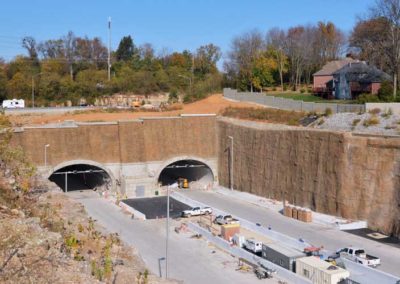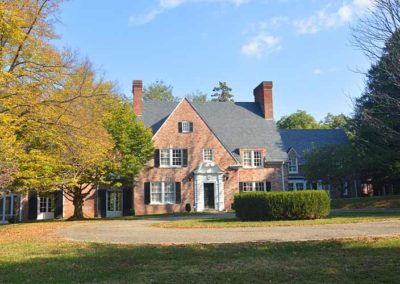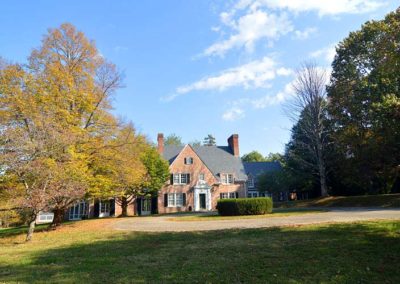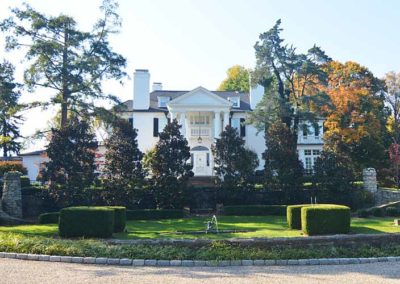Drumanard Estate Historic District

In the approach path from I-265 to the east end bridge this 47-acre wooded estate is federally designated and protected under the U.S. Department of Transportation Act.
The main house is listed on the National Register as 20th-century Tudor Revival-style architecture, and was built in 1929.
The state bought the Harrods Creek site for $8.3 million in 2012. Hundreds of millions of dollars were spent to bore twin tunnels underneath the estate to preserve it. The state of Kentucky, who now own it, is looking for a buyer.
Because the estate, listed in 1983 on the National Register of Historic Places, is part of the Country Estates District, the entire district could have lost some of its integrity if the bridge approach route had run through the property.
Drumanard Estate preservationists claim the property features a historic landscape planned by the nationally-known firm of Olmsted Associates.
The state fought against the federal historic designation for the house that prevented it from being demolished and wanted an overland route taken across the property instead.
Some folks still think the National Register status of the estate got its status as part of a conspiracy by a local group that didn’t want their own property values diminished.
Their findings showed the Olmsted firm’s 1904 layout for Drumanard was never implemented, and was never intended to be implemented on all 55 acres.
The theorists also claimed “state and local historic preservation officials manipulated the process in a deceitful and unethical manner”. Individuals representing the Kentucky Heritage Council, the State Historic Preservation Office, and the Jefferson County Office of Historic Preservation and Archives, “used unprofessional tactics on the owner of the Drumanard from 1988 to 1992 in order to intimidate the owners in placing this property on the National Register solely for the purpose of blocking progress of the East End Bridge”.
They claimed the Drumanard “boundary increase” of the entire 55 acres is not a historic property and should not have been placed on the National Register of Historic Places.
More than one person has claimed “The whole thing is stupid to the extreme”.
6401 Wolf Pen Branch Rd.; also known as the Watson House, the Strater House, and the Fitzhugh House.
GALLERY
Drumanard Tunnel
1700-foot long I-265 tunnel built underneath the Drumanard Estate, part of the approach path to the East End bridge.
Drumanard Estate
Last family to own the property was displaced from the Cherokee Park area in the 1960s to make way for I-64 cutting through the area around the Cochran Hill Tunnels.



